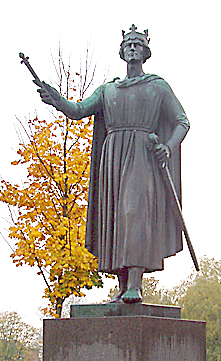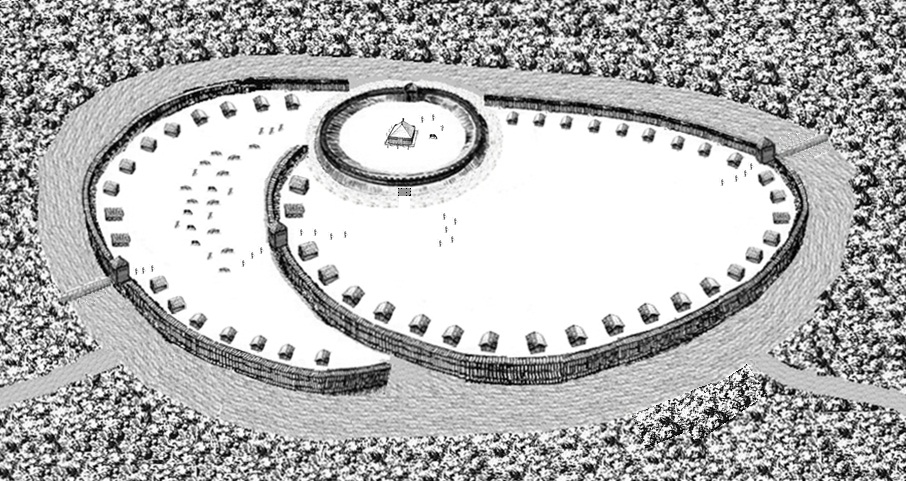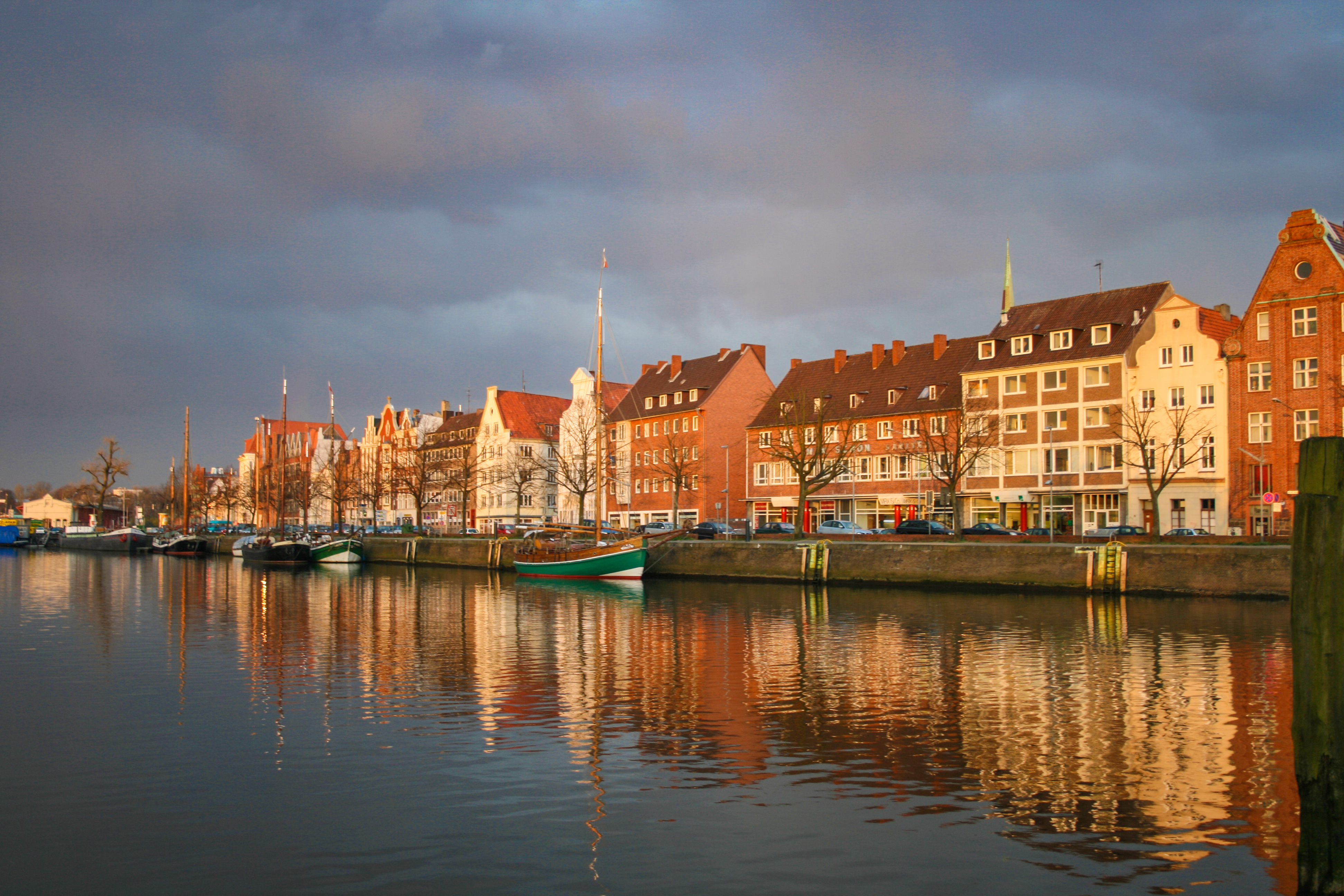|
Henry Of Badewide
Henry of Badewide (or Badwide) () (died ca. 1164) was a Saxon Count of Botwide (after 1149) and Count of Ratzeburg (after 1156). Henry came from a knightly family from Lüneburg. He took his name from Bode near Ebstorf. He married a relative of King Valdemar I of Denmark and had two brothers, Helmold and Volrad; the latter was not, as often supposed, the first Count of Dannenberg. After replacing Henry the Proud as Duke of Saxony in 1138, Albert the Bear made Henry a ''Graf'' (count) of Holstein, but Henry was soon replaced by Adolf II. Gertrude of Süpplingenburg granted Henry a claim to Wagria to the east of Holstein. In response to a raid by the Obotrite prince Pribislav, Henry led a campaign into Wagria against the Polabian Slavs. The lands around Plön, Lütjenburg, and Oldenburg were laid waste, as was the region between the Schwale, the Baltic Sea, and the Trave. The campaign failed to capture any of the strong castles, however. A campaign in 1139 killed much of th ... [...More Info...] [...Related Items...] OR: [Wikipedia] [Google] [Baidu] |
Valdemar I Of Denmark
Valdemar I Knudsen (14 January 1131 – 12 May 1182), also known as Valdemar the Great (), was King of Denmark from 1154 until his death in 1182. The reign of King Valdemar I saw the rise of Denmark, which reached its medieval zenith under his son King Valdemar II. Childhood Valdemar was the son of Canute Lavard, Duke of Schleswig, the chivalrous and popular eldest son of King Eric I of Denmark. Valdemar's father was murdered by King Magnus I of Sweden days before the birth of Valdemar; his mother, Ingeborg of Kiev, daughter of Grand Prince Mstislav I of Kiev and Christina Ingesdotter of Sweden, named him after her grandfather, Grand Prince Vladimir Monomakh of Kiev. Valdemar was raised at Ringsted in the court of Danish nobleman Hvide#Family of Asser Rig, Asser Rig of Fjenneslev (–1151). Asser was a member of the Hvide noble family and had been raised together with Valdemar's father Canute Lavard. Valdemar was raised together with Asser's sons, including Absalon (–1201), w ... [...More Info...] [...Related Items...] OR: [Wikipedia] [Google] [Baidu] |
Polabian Slavs
Polabian Slavs, also known as Elbe Slavs and more broadly as Wends, is a collective term applied to a number of Lechites, Lechitic (West Slavs, West Slavic) tribes who lived scattered along the Elbe river in what is today eastern Germany. The approximate territory stretched from the Baltic Sea in the north, the Saale and the ''Limes Saxoniae''Christiansen, 18 in the west, the Ore Mountains and the Western Sudetes in the south, and medieval History of Poland (966–1385), Poland in the east. The Polabian Slavs, largely conquered by Saxons and Danish people, Danes from the 9th century onwards, were included and gradually cultural assimilation, assimilated within the Holy Roman Empire. The tribes became gradually Germanization, Germanized and assimilated in the following centuries; the Sorbs are the only descendants of the Polabian Slavs to have retained their identity and culture. The Polabian language is now extinct. However, the two Sorbian languages are spoken by approximate ... [...More Info...] [...Related Items...] OR: [Wikipedia] [Google] [Baidu] |
Westphalia
Westphalia (; ; ) is a region of northwestern Germany and one of the three historic parts of the state of North Rhine-Westphalia. It has an area of and 7.9 million inhabitants. The territory of the region is almost identical with the historic Province of Westphalia, which was a part of the Kingdom of Prussia from 1815 to 1918 and the Free State of Prussia from 1918 to 1946. In 1946, Westphalia merged with North Rhine, another former part of Prussia, to form the newly created state of North Rhine-Westphalia. In 1947, the state with its two historic parts was joined by a third one: Lippe, a former Principality of Lippe, principality and Free State of Lippe, free state. The seventeen Districts of Germany, districts and nine Independent city#Germany, independent cities of Westphalia and Lippe (district), the single district of Lippe are members of the North Rhine-Westphalia#Subdivisions, Westphalia-Lippe Regional Association (''Landschaftsverband Westfalen-Lippe''). Previo ... [...More Info...] [...Related Items...] OR: [Wikipedia] [Google] [Baidu] |
Boizenburg
Boizenburg (, ) is a municipality in the Ludwigslust-Parchim district in Mecklenburg-Western Pomerania, Germany. It is situated on the right bank of the Elbe, west of Ludwigslust, northeast of Lüneburg and east of Hamburg. It is part of the Hamburg Metropolitan Region. Boizenburg's historical old town stretches along the Elbe, has a harbour and offers heritage baroque timberframe and brick buildings. As per the dictates of the Yalta Conference, Boizenburg was placed just a few kilometers behind the perimeter of the Iron Curtain, otherwise known as the 'Inner German Border'. History The German name ''Boyceneburg'' was first documented in 1158. The written form changed to ''Boiceneburg'' (1171) and then ''Boizeneburg'' (1195). The old Low German name for the town and river (Boize) likely stems from the Slavic ''boj'' for war. Boizenburg suffered during the Thirty Years' War and its old castle was burnt down by Swedish troops in 1628. In 1709 the church and 160 or more me ... [...More Info...] [...Related Items...] OR: [Wikipedia] [Google] [Baidu] |
Wittenburg
Wittenburg (, ) is a town in the district Ludwigslust-Parchim in Mecklenburg-Vorpommern, Germany. Wittenburg has been the seat of the Amt (administrative division), Amt of Wittenburg (Amt), Wittenburg since January 2004. It is in the west of Mecklenburg-Vorpommern and lies on the little river Motel. The settlements of Helm, Klein Wolde, Wölzow, Lehsen, Körchow and Ziggelmark are part of Wittenburg. At the beginning of the 12th century, Wittenburg belonged to the territory of the Polaben Obotrites. Wittenburg was first mentioned in 1154 and gained town privileges in 1230. Number of inhabitants Notable people * Harald Ringstorff (born 1939), politician (SPD) Gallery Image:Wittenburg church.jpg, St. Bartholomew's church File:Wittenburg tower.jpg, Tower of town wall File:Wittenburg Amtsberg.jpg, File:Wittenburg Stadtmauer Wallstr.jpg, Town wall File:Wittenburg Toitenwinkel 4.jpg, Timber framing File:Wittenburg Gluecksfaenger.jpg, Sculpture on market square File:Wittenburg ... [...More Info...] [...Related Items...] OR: [Wikipedia] [Google] [Baidu] |
Gadebusch
Gadebusch () is a town in Mecklenburg-Western Pomerania in the district of Nordwestmecklenburg. Halfway between Lübeck, Schwerin and Wismar, it is part of the Hamburg Metropolitan Region. The town is known for two notable monuments: the ''Stadtkirche'' (City Church), built in 1220, considered the oldest brick church in Mecklenburg, and the ''Schloss'' (Castle), built in 1580–1583 in Northern Renaissance style. Near the town is the site of the Battle of Gadebusch in 1712. Gadebusch municipality Besides the old town of Gadebusch, the following settlements are incorporated with the Gadebusch municipality: * Amtsbauhof * An der Flöte * Buchholz * Dorf Ganzow * Güstow * Güstow Werder * Hof Ganzow * Jarmstorf * Klein Hundorf * Möllin * Neu Bauhof * Neu Güstow * Reinhardtsdorf * Stresdorf * Wakenstädt Education Gymnasium Gadebusch (high school) Notable people * Theodor Körner (1791–1813), author and freedom fighter, fallen in a forestry at Rosenow * Agnes Karll (1868� ... [...More Info...] [...Related Items...] OR: [Wikipedia] [Google] [Baidu] |
Polabians (tribe)
The Polabians (; ) were a constituent Lechitic tribe of the Obotrites who lived between the Trave and the Elbe. The main settlement of the Polabians was Racisburg (modern Ratzeburg), named after their Prince Ratibor. The Polabians were similar to the Drevani, also known as the Draväno-polaben or Drevanen, in Lüchow-Dannenberg. In 1139, Henry the Lion granted "Polabia" to Count Henry of Badewide. The tribe was subsequently Germanized and assimilated over the following centuries. The last remnants of the Polabians, including the Polabian language, died out in the 18th century. Cultural remnants of the Polabians of Lower Saxony include numerous villages in the region based on Slavic settlement forms. See also * List of early Slavic peoples *Lechites Lechites (, ), also known as the Lechitic tribes (, ), is a name given to certain West Slavs, West Slavic tribes who inhabited modern-day Poland and eastern Germany, and were speakers of the Lechitic languages. Distinct fro ... [...More Info...] [...Related Items...] OR: [Wikipedia] [Google] [Baidu] |
Segeberg
Segeberg (; ) is a district in Schleswig-Holstein, Germany. It is bounded by (from the southwest and clockwise) the districts of Pinneberg, Steinburg and Rendsburg-Eckernförde, the city of Neumünster, the districts of Plön, Ostholstein and Stormarn, and the city state of Hamburg. History The history of the district is connected to the history of Holstein. In 1134, the castle of Segeberg was erected as a regional centre from where the reeve of Segeberg ruled. When Schleswig-Holstein became a Prussian province in 1865, the Prussian administration established the district of Segeberg. Since then, the district has grown considerably twice: In 1932 parts of the dissolved district of Bordesholm joined the district; in 1970 the city of Norderstedt became part of the district. Geography The district of Segeberg consists of the agricultural plains between the cities of Neumünster and Hamburg. A southwestern portion of the hilly lakeland called "Holsteinische Schweiz" (Holsatian Swi ... [...More Info...] [...Related Items...] OR: [Wikipedia] [Google] [Baidu] |
Henry The Lion
Henry the Lion (; 1129/1131 – 6 August 1195), also known as Henry III, Duke of Saxony (ruled 1142-1180) and Henry XII, Duke of Bavaria (ruled 1156-1180), was a member of the Welf dynasty. Henry was one of the most powerful German princes of his time. As the Duke of Saxony, Henry had had a decisive part in 1152 in his cousin Frederick Barbarossa's campaign for the throne. Because of this, in the following years, he was intensely promoted by Barbarossa. So, in 1156, he received the Dukedom of Bavaria. In North Germany, Henry could now build a kingly presence. He achieved this in Brunswick by building a new collegiate church, St Blaise, and, in the neighbouring Dankwarderode Castle, he placed a statue of a lion, as a symbol of its place as the capital of his duchies. The aggressive building strategy of the Duke in Saxony and north of the Elbe supplanted the influence of the previous greats of Saxony. Next, Henry repaid Barbarossa’s sponsorship by putting great effort into ... [...More Info...] [...Related Items...] OR: [Wikipedia] [Google] [Baidu] |
Trave
The Trave () is a river in Schleswig-Holstein, Germany. It is approximately long, running from its source near the village of Gießelrade in Ostholstein to Travemünde, where it flows into the Baltic Sea. It passes through Bad Segeberg, Bad Oldesloe, and Lübeck, where it is linked to the Elbe–Lübeck Canal. It is navigable for sea-going vessels from the Baltic to the Lübeck ports. The Herren Tunnel crosses the Trave, as do numerous bridges, and a ferry connects Travemünde with Priwall Peninsula, Priwall. Tributaries of the Trave include the Wakenitz and the Stepenitz (Trave), Stepenitz. Course Source and upper Trave The Trave rises in Gießelrade (a village in Ostholstein), whence it flows first southwesterly through the Wardersee to Bad Segeberg and then further south to Bad Oldesloe. There it bends eastward to just south of Reinfeld, Schleswig-Holstein, Reinfeld, flowing past Hamberge and (a district of Lübeck) to reach Lübeck. In Lübeck The Elbe–Lübeck Canal joi ... [...More Info...] [...Related Items...] OR: [Wikipedia] [Google] [Baidu] |
Baltic Sea
The Baltic Sea is an arm of the Atlantic Ocean that is enclosed by the countries of Denmark, Estonia, Finland, Germany, Latvia, Lithuania, Poland, Russia, Sweden, and the North European Plain, North and Central European Plain regions. It is the world's largest brackish water basin. The sea stretches from 53°N to 66°N latitude and from 10°E to 30°E longitude. It is a Continental shelf#Shelf seas, shelf sea and marginal sea of the Atlantic with limited water exchange between the two, making it an inland sea. The Baltic Sea drains through the Danish straits into the Kattegat by way of the Øresund, Great Belt and Little Belt. It includes the Gulf of Bothnia (divided into the Bothnian Bay and the Bothnian Sea), the Gulf of Finland, the Gulf of Riga and the Bay of Gdańsk. The "Baltic Proper" is bordered on its northern edge, at latitude 60°N, by Åland and the Gulf of Bothnia, on its northeastern edge by the Gulf of Finland, on its eastern edge by the Gulf of Riga, and in the ... [...More Info...] [...Related Items...] OR: [Wikipedia] [Google] [Baidu] |
Schwale
The Schwale is an approximately 16 kilometer long river in Schleswig-Holstein, Germany. The origin is in the district Segeberg close to Gönnebek, the confluence with the Stör is in the independent town Neumünster. In the centre of Neumünster the river is dammed to an artificial lake from the medieval times to operate a water mill. See also *List of rivers of Schleswig-Holstein A list of rivers of Schleswig-Holstein, Germany: A * Aalbek, flowing through the Hemmelsdorfer See and into the Baltic Sea * Aalbek, tributary of the Stör *Alster * Alte Schwentine * Arlau B * Barnitz * Basshornlaufgraben * Bekau * Beste * ... Rivers of Schleswig-Holstein Rivers of Germany {{SchleswigHolstein-river-stub ... [...More Info...] [...Related Items...] OR: [Wikipedia] [Google] [Baidu] |






